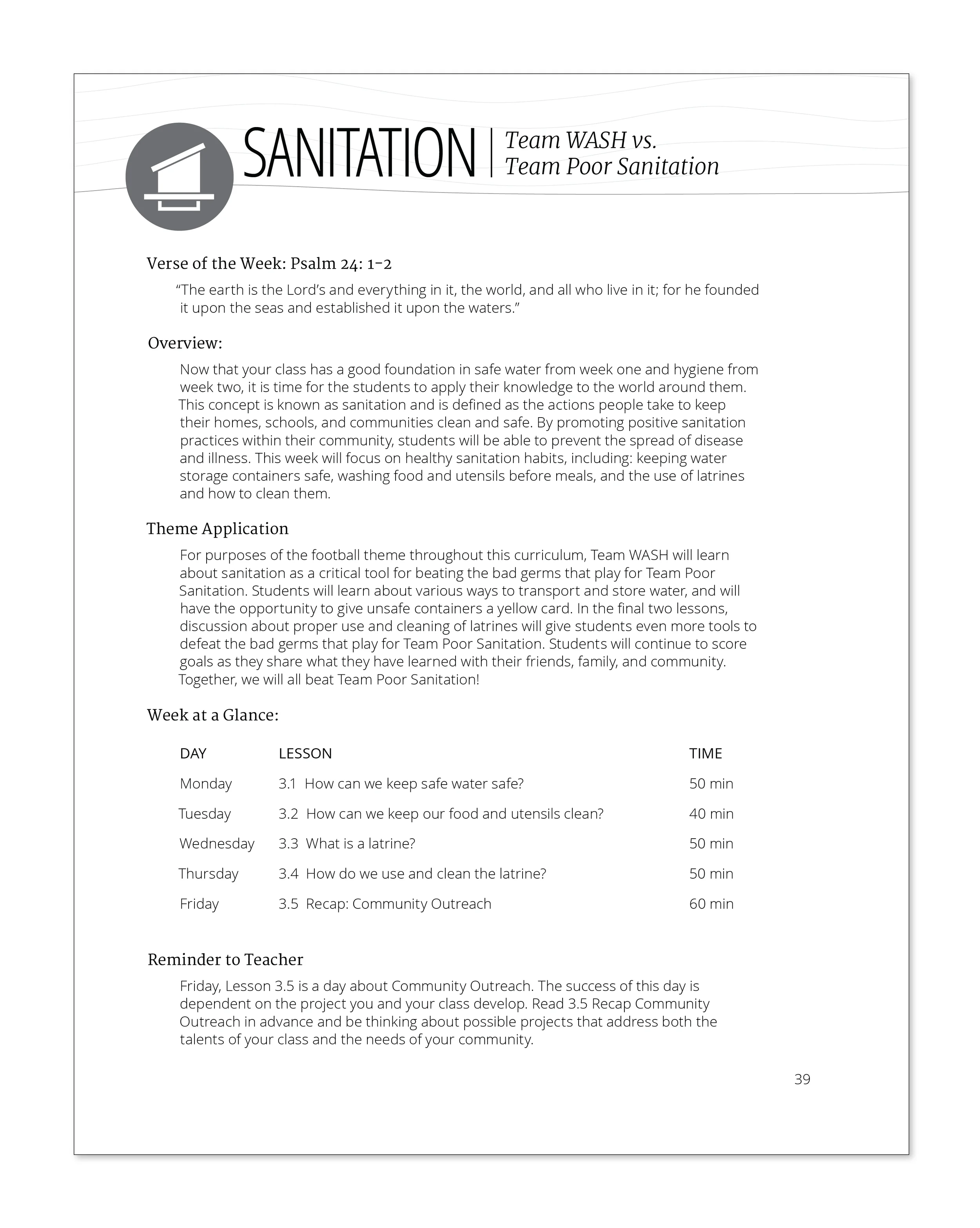WASH CURRICULUM & UGANDA DESIGN RESEARCH TRIP
Visual Communication, Design Research
Photo courtesy of David Uttley
During fall of 2013, Notre Dame's Design for Social Good class teamed up with Lifewater International and Rule29 to work on a project regarding safe water, hygiene, and sanitation education in rural Uganda.
The WASH curriculum is a 200+ page teacher's manual used in primary schools around the world to educate children about safe water, hygiene and sanitation.
My team of four was specifically tasked to complete a total redesign of Lifewater's current WASH curriculum.
Recognizing the value of the educational content as well as the opportunities for improved organization, hierarchy, and application, we set out to redesign WASH specifically for teachers in the Ugandan educational system.
Our solution focuses on empowering students to become educated leaders on safe water access, sanitation and hygiene within their communities. Information that students learn in school is often channeled outside the classroom and into their homes and community. Harnessing this, we took the 200+ pages and developed a comprehensive 56-page teacher's manual, a 30-page resource packet, and a 12-page student workbook.
Our specific design efforts involved the development of: restructured content*, improved visual hierarchy*, transparent word choice*, additional homework activities, a unifying contextual theme, an accompanying student workbook, and updated illustrations*.
*efforts that I directly led, though I had a hand in each of the above.
Prepping our research strategy & methods before leaving for UG
While we did the best we could from our desks in West Lake Hall, the United States education system is very different from the Ugandan education system (to say nothing of the differences in culture, government, resources, etc.). After receiving funding, four designers from the design department and I departed for an independent research trip to Uganda.
Once in Uganda, we had the opportunity to speak with primary school teachers at both private and government-run schools in rural Gulu. We received feedback on our redesigned curriculum and gathered invaluable first-hand information regarding the Ugandan educational system, government influences, cultural context and visual language. In order to take WASH to the next level, we quickly realized the incredible opportunity (and necessity) that existed in establishing a collaborative relationship between the expertise of these teachers and our design skills.
And we're not done yet!
Researching is only half of the job! Our research team is currently working to turn our experiences and observations into actionable insights so that we can continue to iterate, improve and implement the WASH curriculum. Stay tuned!


































